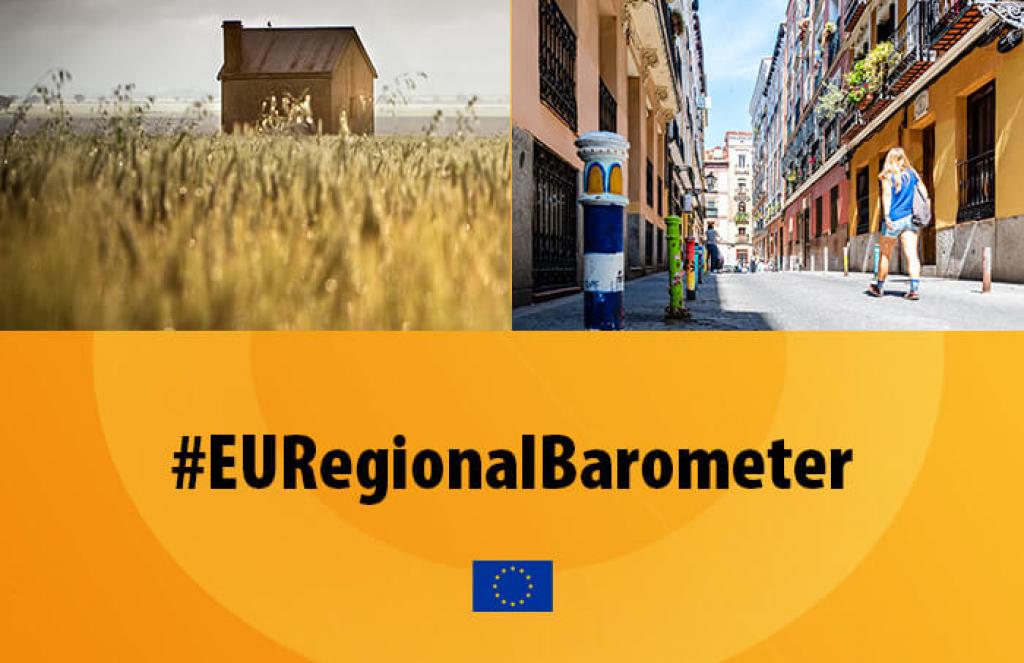Thessaloniki gets ready for its metro launch in November
The underground rapid transit lines have been under construction for almost two decades due to various project delays
 TheMayor.EU logo
TheMayor.EU logo 
The Barometer is a valuable insight into the state of local government in the EU, Source: Committee of the Regions
The report, called Regional and Local Barometer, measured the pulse of the lower rungs of EU governance
Regional and Local Barometer – that is the name of the second edition of a wide-scope report that the Committee of the Regions (CoR) has published as a way to give EU institutions a wider view of the state of post-pandemic recovery in the continent’s cities and regions.
Speaking on the occasion of its release, CoR President Apostolos Tzitzikostas warned that there was a 180-billion-euro gap hole in local budgets and went on to criticize national governments’ failure to consult their local counterparts on the investment plans and recovery strategies.
The prospect of EU funds not being directed where cities and regions feel they are most needed also risks exacerbating problems posed by the vast funding gap between spending and revenues caused by the COVID-19 pandemic.
The annual report, which includes one of the largest EU-wide opinion polls of local and regional governments ever conducted - also highlights widening social and economic inequalities between regions within the same country and across the EU, including a rural-urban digital divide that is undermining the EU's ambitions for a green and digital economic transition.
“Our Regional and Local Barometer measures the impact of the pandemic on our regions, cities and villages so that all levels of governance – EU, national, regional and local - can take concrete action to address our people's problems. Too often Europe is only associated with its 27 Member States,” exclaimed The President of CoR.
His words were meant to remind Europeans that “The EU is much richer than that: it is over 300 regions, 90.000 municipalities and 1,1 million regionally and locally elected politicians representing over 400 million people.” In that regard, the Barometer offers a new perspective on the state of the EU – one that actually takes into account its diversity and complexity.
Those interested in the finer details of the report can read it here. Otherwise, here is a summary of the most essential conclusions that it presented:
The Annual Regional and Local Barometer is accompanied by a political resolution (containing 15 recommendations) by the 329 members of the Committee of the Regions. The documents will be presented to the Presidents of the European Commission, European Parliament and the European Council.

The underground rapid transit lines have been under construction for almost two decades due to various project delays

Now you can get your wine in Talence by paying directly in Bitcoin

That’s because the state has to spend money on updating the railway infrastructure rather than subsidizing the cost of the popular pass

Rethinking renewable energy sources for the urban landscape

The examples, compiled by Beyond Fossil Fuels, can inform and inspire communities and entrepreneurs that still feel trepidation at the prospect of energy transition

Now you can get your wine in Talence by paying directly in Bitcoin

The 10th European Conference on Sustainable Cities and Towns (ESCT) sets the stage for stronger cooperation between the EU, national and local level to fast track Europe's transition to climate neutrality.

At least, that’s the promise made by the mayor of Paris, Anne Hidalgo

The underground rapid transit lines have been under construction for almost two decades due to various project delays

At least, that’s the promise made by the mayor of Paris, Anne Hidalgo

Hostal de Pinós is located in the geographical centre of the autonomous region

Despite its church-y name, the district has long been known as the hangout spot for the artsy crowds

Urban dwellers across the EU are having a say in making their surroundings friendlier to people and the environment.

Forests in the EU can help green the European construction industry and bolster a continent-wide push for architectural improvements.

Apply by 10 November and do your part for the transformation of European public spaces

An interview with the Mayor of a Polish city that seeks to reinvent itself

An interview with the newly elected ICLEI President and Mayor of Malmö

A conversation with the Mayor of Lisbon about the spirit and dimensions of innovation present in the Portuguese capital














